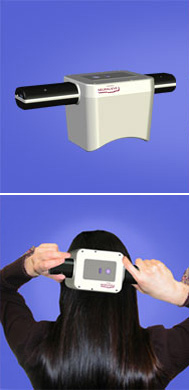
Scientists now believe that migraine attacks start because of nerve cell hyper-excitability, which is followed by fatigue and malfunction of the neurons.
“This process spreads throughout the brain and the end result is the throbbing headache,” said Dr. Yousef Mohammad, principal investigator of the study and an assistant professor of neurology at Ohio State University Medical Center. “If we can interrupt this with two pulses of magnetic stimulation, we can abort the headache,” he added.
The TMS device used in this study is approved by the U.S. Food and Drug Administration as an investigational device. It sends an electric current through a metal coil, creating a magnetic field that activates nerve cells in the brain.
The study involved 43 people who had migraines with aura and were randomly picked to receive either TMS or treatment with a placebo device. Participants were instructed to give themselves two pulses to the back of the head at the first sign of an aura.
Seventy-four percent of people in the TMS group said they had no or only a mild headache two hours after using the device, compared with 45 percent in the control group. Participants also reported a reduction in noise and light sensitivity: 74 percent of people in the TMS group experienced a reduction in light sensitivity while 75 percent experienced less noise sensitivity. In the placebo group, only 20 percent or so experienced such reductions.
A larger study of TMS involving nine medical centers and 200 patients will begin next month, Mohammad said.
